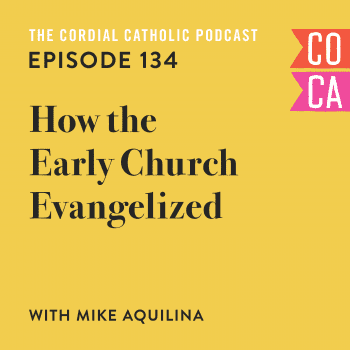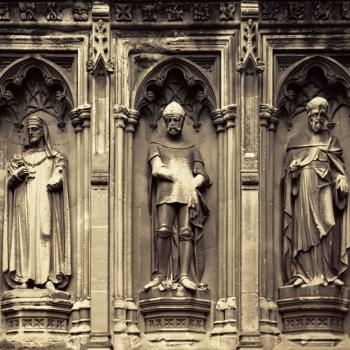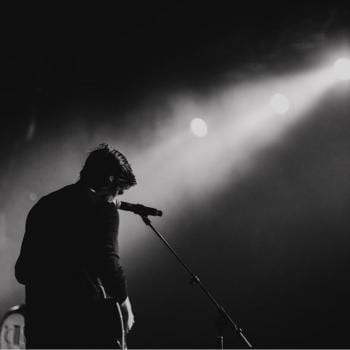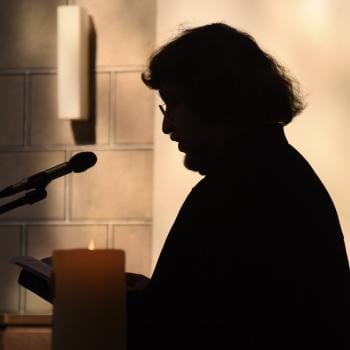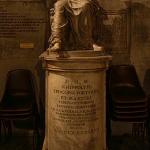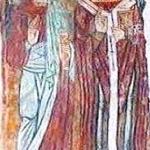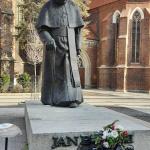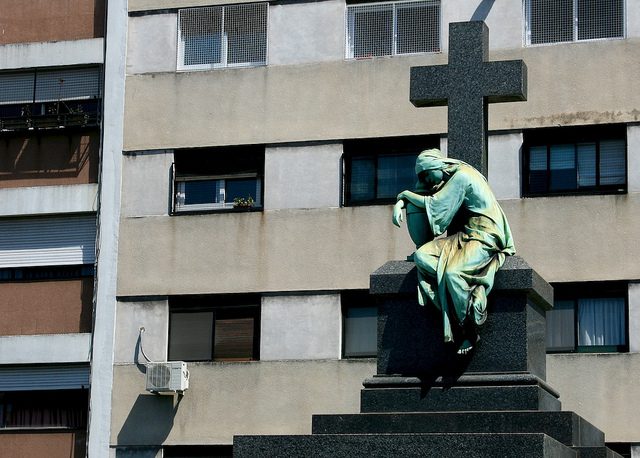
When I originally set out on this journey from Protestantism to Catholicism I didn’t know exactly what to expect. At a certain point, however, I became Catholic. At a certain point in the journey I found the claims and practices of the Catholic Christian faith to be, as I put it, historically, intellectually, and spiritually compelling. I told this to a Catholic friend I met a couple of months ago and he suggested, politely, that I consider adding aesthetically compelling as well.
I see, only a couple months later, as I continue to live the Catholic life, exactly what he means.
He means that the Catholic life, in its physical trappings, is a profoundly rich life. He means the environment the faith creates, in its churches, in its plethora of devotions, in its tradition of icons and statues and works of sacred art reaches the senses in a unique and incredible way. He means, in the mere language of the Church, there is a beauty of Heaven on earth—a beauty which brings the spiritual world into the natural.
And it’s completely captivated me.
A good friend of mine, much to the playful chagrin of my wife, gave me a small statue of the Blessed Mother that he found in the back garden of the house he moved into with his wife a couple of years ago. He thought I would give it a respectful home, instead of throwing it away, and he was right. Mary sits on a ledge in our front entryway and every time I come it’s the first thing that catches my attention—everytime I go, it’s the last thing I see. The statue of Mary says, with a real physical urgency, “Here I am and I’m praying for your intentions.” It’s a beautiful, poignant thing. That statue represents something real: Mary, the Mother of God, who asked her Son to turn water into wine and He did. Who, on the cross, Jesus gave to us as our mother.
It’s just a dirty, slightly broken statue, but every time I enter the house and every time I’m about to leave I’m reminded that whatever is in my heart, whatever I’m thinking of or praying about that day, Mary is joining with me.
It’s something physical to remind me of the presence of the saints—that great cloud of witnesses—and Mary, who said, “Yes,” to God, foremost among them.
The rosary is the same way. With the beads and the crucifix I am praying with my body as well as my soul and there’s something profoundly rich in that, for me, and something profoundly different than my experiences with prayer as a Pentecostal.
I was thinking, and working on this article, while away from home this weekend. I had the opportunity and privilege to take in Mass at a parish that wasn’t my own and this is always, in my experiences so far, a pretty incredible experience. This particular Sunday, however, was an especially poignant experience and it’s down to aesthetics, to be sure. And it’s down to, again, why I’m falling in love with the Catholic Church.
It was the deacon of this particular parish who gave the homily—and it was wonderful—but the priest who celebrated the Communion part of the Mass (the Liturgy of the Eucharist). But, it was the deacon who stole the show then too. It was the deacon who, with such profound reverence, knelt beside and slightly behind the priest as he prayed over the Communion elements and as they became, according to Catholic theology, the real blood and body of Christ. It was the deacon, a grown man of fifty, who knelt there with his eyes fixed on the Communion wafer as the priest raised it over his head. And then again, on the chalice of wine, as the priest raised that over his head too.
The sight of a grown man, a strong mature individual, kneeling in absolute reverence and so fixed on the blood and body of Christ is enough to bring another grown man (although much less mature) nearly to tears.
Following the Reformation, and in the traditions that sprung up as a result, Protestant denominations cleared out their churches, and their lives, of physical representations of the God we love and serve and His people. There are, and were, lots of reasons—some theological, and some not. Many mainline churches, those closest to the tradition of the early reformers like the Lutherans, have taken steps back towards that which they originally jettisoned. The Lutheran church where my own non-denominational church meets and shares space in looks not much different from the Catholic church I attend for Mass.
But most Protestant churches, the evangelical churches rooted in North American Puritanism, are largely empty spaces. And I can see the argument from both sides. There have been times, certainly, when I would’ve argued that a blank canvas, a space of worship free from clutter and design, is less distracting and in those spaces I’m more able to connect with God.
But I wouldn’t say that anymore.
I’ve fallen in love with the Catholic Church. I’ve found it to be intellectually, historically, and spiritually satisfying. But I’ve also found it to be, deeply, aesthetically satisfying too. I’ve found incredible comfort, joy, and edification in the tangible things of the Catholic Church. In the statues that remind me of the saints who are praying for me (no, Catholics don’t worship them—statues or the saints they represent). In the tangible devotions like the rosary.
And, of course, in the beautiful practice of Eucharistic Adoration and the fact that, like that holy deacon recognized, we can tangibly believe, and know, that Jesus Christ is really with us. Here and now, forever and ever. Amen.








